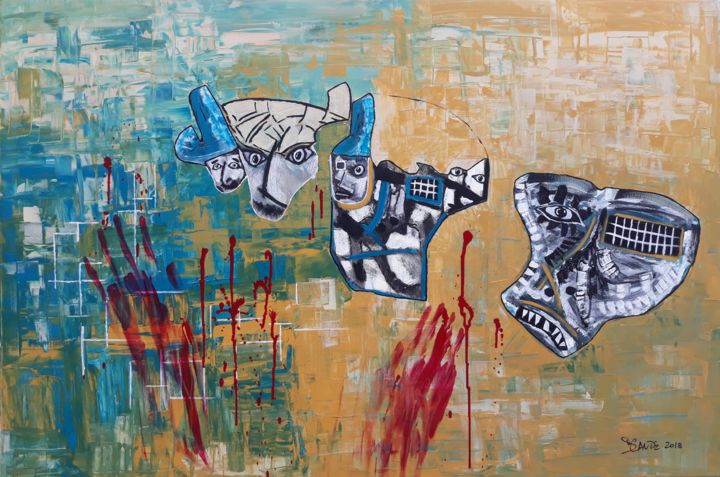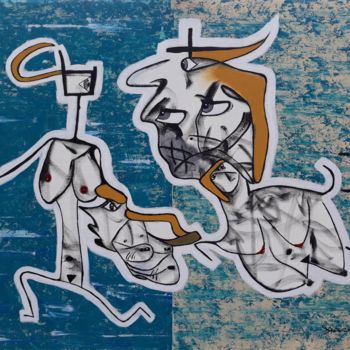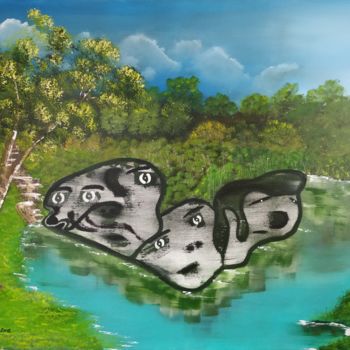O Extermínio dos Gorilas (2018) Painting by Dcante
Not For Sale
Sold by Dcante
-
Original Artwork
Painting,
Acrylic
on Canvas
- Dimensions Height 31.5in, Width 47.2in
- Categories Paintings under $5,000 Expressionism
By 2016 only 5,000 Eastern Gorilla (Beringei Gorilla) remained on the face of the Earth. The majestic species now faces the risk of disappearing altogether, according to the International Union for Conservation of Nature (IUCN) in Honolulu. Four in six of the world's largest apes are in grave danger, just one step away from extinction, including the Eastern Gorilla, the Western Gorilla, the Borneo Orangutan and the Sumatran Orangutan, according to the most recent update on the Red List of IUCN, the world's largest inventory of animal and plant species.Seeing the Gorilla from the East - one of our closest cousins - to move towards extinction is truly disturbing. War, hunting and loss of land for refugees in the last 20 years has led to a devastating population decline of more than 70% in the case of the Eastern Gorilla.One of the two subspecies of the Eastern Gorilla, known as Grauer Gorilla, has fallen steeply since 1994, when there were 16900, to only 3800 in 2015.While killing these primates is illegal, hunting is the biggest threat that hangs over them, according to experts.The second subspecies of the Eastern Gorilla - the Mountain Gorilla - recorded a slight recovery in the numbers of its population and now counts a total of 880 mammals. According to the Wildlife Conservation Society (SCVS), genocide in Rwanda has triggered a series of events that have also had an impact on gorillas. Genocide has pushed many people out of Rwanda, many refugees have gone to the eastern DRC, to areas relatively unoccupied by humans. Some people hunted gorillas to eat, while activities such as mining and coal production and human settlements also violated the habitat of gorillas. People who moved to this part of the DRC saw gorillas as a delicacy. Gorillas do not mate with members of the same group and therefore, there is more difficult to find a partner and consequently keep their reproduction. It should also be noted that gorillas are herbivorous animals and do not usually have violent behavior. When they feel threatened, they howl and beat in the chest to chase away the aggressor. Only when the technique does not work do they start for a physical confrontation. At this time, the hunters take advantage of the situation to shoot and cowardly slaughter the animals.Through this painting, Dcante reveals the expression of his own feelings through a process of subliminal creation of defragmentation of the abstract, culminating with the expression of reality. The line and the color are used in an emotive way and loaded with weight and symbolism. In this process of creation, parallel to the capture of existence, Dcante translates into images the substratum that underlies the apparent reality reflecting the immutable and eternal human being and nature through the transmutation of concrete as a form of denunciation of society and desire to change that for what would be ideal. In this canvas we can see several hunters and intermediaries, some caged, representing the business web and social interests of gorilla hunting and a gorilla that hides in one of the hunters, already outside its natural habitat that had been destroyed, accompanied by the representation of a bird which is part of its face. The signs of its death are strongly expressed by the dripping of its blood and by the traces its hands leave attempting to cling to life.








